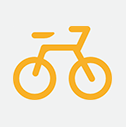Parents and supervisors
Reducing crash risks

New drivers have a much higher risk of crashing than more experienced ones.
After 12 months of driving, new drivers almost halve their initial crash rate and their safety continues to improve for several years after licensing.
Common crashes involving novice drivers include:
- Rear end.
- Single vehicle.
- Turning right at intersections.
- Changing lanes and merging or diverging.
- Being hit by a right turning vehicle.
These crashes can be avoided by getting lots of experience and practising some key safe driving behaviours:
- Increase following distances.
- Monitor speed and adjust to traffic conditions and the road environment.
- Don't go beyond your limits or the car limits.
- Don't assume another driver will give way.
- Slow down before entering intersections.
- Choosing a safe gap in traffic when turning and merging.
Encouraging safe behaviours is an important part of your work with your learner driver.
Driving safely at all times can't be emphasised enough. Neither can the impact of:
- Drink driving.
- Drug driving.
- Speeding.
- Fatigue.
- Not wearing seatbelts.
All five are potential killers. Make sure your learner understands how dangerous these are and the importance of driving within the law.
Speeding and stopping distance
The risk of a casualty crash approximately doubles with each 5 km/h increase in speed on a 60 km/h road, or with each 10 km/h increase in speed on 110 km/h roads.
Driving over the speed limit:
- Increases your chances of being involved in a crash.
- Means you have less time to react to avoid a crash.
- Takes longer to stop the vehicle to avoid a crash.
- Increases the severity of injury in a crash.
A critical factor in the relationship between speed and crashes is stopping distance. There are two components to stopping distance:
- The distance travelled by the vehicle during the time it takes for the driver to react; and
- The distance travelled once the brakes have been applied.
Car safety
Your new driver will be safer if their car has a 4 or 5 star ANCAP safety rating from ANCAP. If you're buying a used car - check the Used Car Safety Ratings Buyer's Guide (PDF, 3182 KB).
Make sure their car is roadworthy. That means it meets vehicle standards including wheels and tyres, steering, brakes, seatbelts, lamps and reflectors, exhaust and emission controls, windscreens and wipers, vehicle body and chassis. Read more on roadworthiness.
All motor vehicles that are driven on South Australian roads must be registered. This involves the payment of a fee, which includes a component to cover Compulsory Third Party (CTP) insurance. Just as registration of your vehicle is compulsory, so is CTP insurance.
You can also insure the vehicle with a private insurer for Third Party Property Insurance or Comprehensive Insurance.
Videos worth watching with your learner driver





























